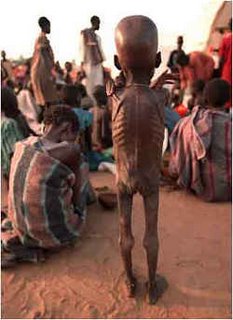 Growing up in northern California I remember a painting of Jesus that was hanging in the entry way of the church I attended for several years. It was one that is familiar to many American Christians, reflecting a European conception of Christ.
Growing up in northern California I remember a painting of Jesus that was hanging in the entry way of the church I attended for several years. It was one that is familiar to many American Christians, reflecting a European conception of Christ. 
As I grew older and pursued biblical and historical studies I came to recognize that the face of Jesus looked very different. Jesus wasn't a blue eyed European, but as a Jew he had the Semitic features common to his ethnicity and period of history.
But as I study not only theology, but also the cultural and historical shifts in Christendom in the twenty-first century, I think we can see not only the changing face of Jesus, but related and identified with that, the changing face of the church as well. I just finished Jenkins' The Next Christendom, and the following quotes are relevant to the changing face of Jesus and the church, a face that challenges Christendom in the Western world, and most especially the Northern Hemisphere:
African and Latin American Christians are people for whom the New Testament Beatitudes have a direct relevance inconceivable for most Christians in Northern societies. When Jesus told the "poor" they were blessed, the word used does not imply relative deprivation, it means total poverty or destitution. The great majority of Southern Christians (and increasingly, of all Christians) really are the poor, the hungry, the persecuted, even the dehumanized. India has a perfect translation for Jesus' word in the term Dalit, literally "crushed" or "oppressed." This is how that country's so-called Untouchables now choose to describe themselves: as we might translate the biblical phrase, blessed are the Untouchables.I think I am beginning to see a new face of Jesus in the twenty-first century.
Knowing all this should ideally have policy consequences, which are at least as urgent as redistributing church resources to meet the needs of shifting populations. Above all, the disastrous lot of so many Christians worldwide places urgent pressure on the wealth societies to assist the poor. A quarter of a century ago, Ronald J. Sider published the influential book, Rich Christians in an Age of Hunger, which attacked First World hypocrisy in the face of the grinding poverty of the global South. The book could easily be republished today with the still more pointed title Rich
Christians in an Age of Hungry Christians, and the fact of religious kinship adds enormously to Sider's indictment. When American Christians see the images of starvation from Africa, like the hellish visions from Ethiopia in the 1980s, very few realize that the victims share not just a common humanity, but in many cases the same religion. Those are Christians starving to death. (Jenkins, 266-217)

1 comment:
You may be interested in the "icons | global" and "icons | tribal" photo albums on my blog site. It features images of Jesus from Australian Aboriginal, American Indian, African and Asian cultures.
Post a Comment